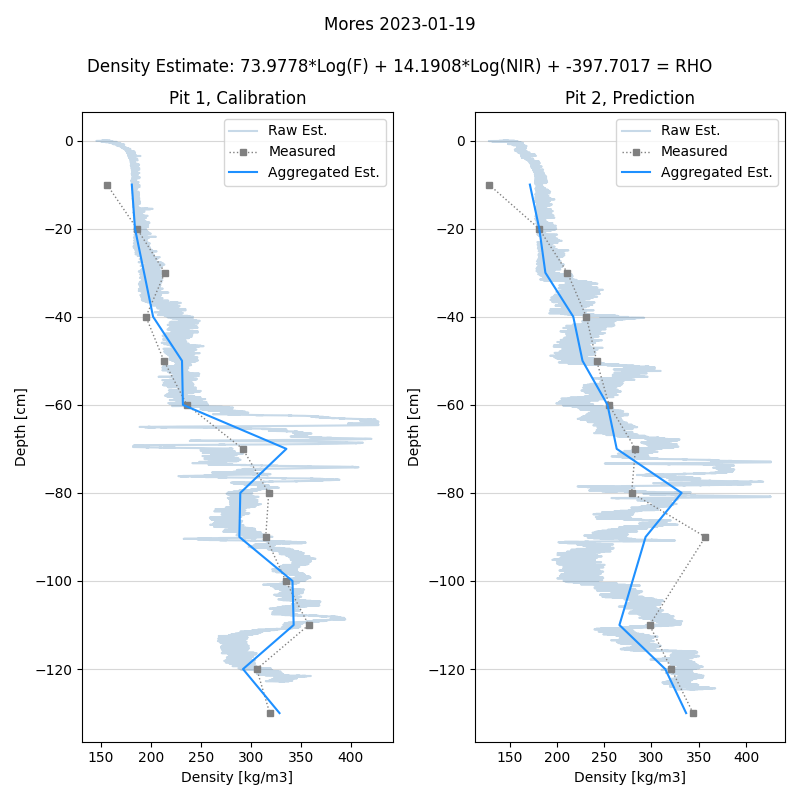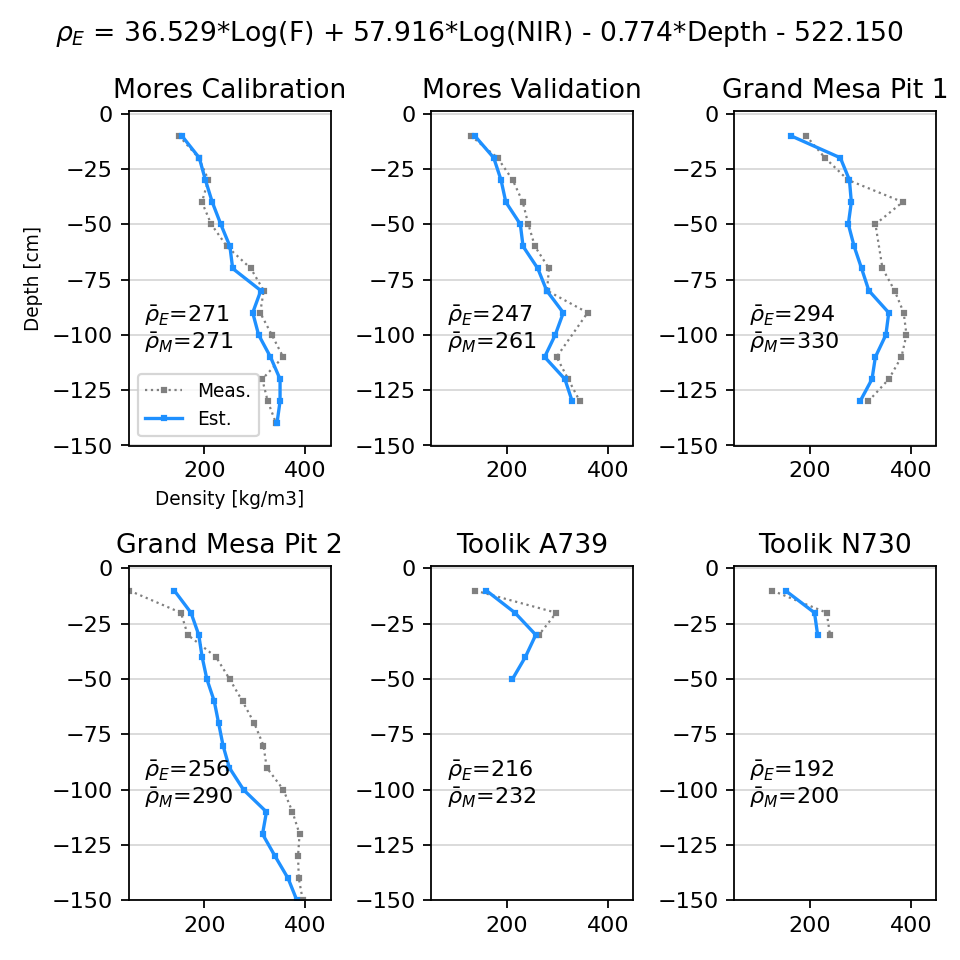
Measuring snow density can be challenging. Traditional methods require digging a pit and taking incremental measurements with a density cutter, which is time-consuming. Alternatively, using a federal sampler can speed up the process, but it often results in errors under certain conditions and provides only a single density value. For a faster, more accurate way to obtain detailed, vertically resolved snow density measurements in a single day, the Lyte probe can offer a solution.
Developing Density Retrievals
Deriving snow density from a digital penetrometer was originally pioneered using the Snow MicroPen (SMP) developed by the Swiss Federal Institute for Snow and Avalanche Research (SLF). Snow scientists established a statistical relationship between the SMP measurements and snow density, which showed moderate success when compared to traditional wedge cutter measurements. Arctic researchers later expanded on this work, replicating the results and demonstrating the potential for faster density retrievals. However, the high cost and bulky size of the SMP have limited its widespread adoption.
Recognizing these limitations, we set out to develop a more accessible and user-friendly solution for retrieving snow density with the Lyte probe.
Expanding on Previous Work
We were able to expand on the work done with the SMP using nearly the same process described in previous research. Initially, we aimed to use the Lyte probe to enhance the utility of one density pit. Our hope was that a single profile could be calibrated to one pit and then yield subsequent nearby measurements of density through the Lyte probe. The experiment was straightforward: perform a calibration and validation at two locations differing in elevation and aspect. The results were shockingly promising.

Continued Success in the Field
Later, the same probe was deployed to Grand Mesa for another campaign and then again to Toolik, Alaska for the Spring SnowEx mission. In both cases, the probe performed surprisingly well, suggesting that the technique was more robust than we initially anticipated.

Why This Works:
Looking at the results above, it is rather surprising how well the Lyte probe is predicting density considering how little data is being used for calibration. Remember, a single probe measurement and single pit from Idaho are being used for calibration and then validated in Colorado and the Alaska. Here is why we think this is working so well.
- Solid Foundation: The technique we’re starting with is based on scientific literature, building on solid peer-reviewed science.
- Multi-Sensor Approach : Unlike the previous methods that only used force measurements, the Lyte probe includes colocated near-infrared (NIR) sensors. These sensors provide data closely related to grain size, offering a view of the snowpack through the lens of two different sensors. This dual-sensor approach results in a comprehensive look at the snowpack.
Unprecedented Opportunities with the Lyte Probe:
Lyte probe-derived snow density offers an unprecedented opportunity to provide easier-to-use and more affordable measurements. Researchers can take probe measurements at the same location as a density profile and calibrate to it. This allows them to examine sub-centimeter variations in density with confidence that the data is well-constrained. This capability is crucial for modeling signals like microwave radiation for remote sensing applications. Another significant limitation of traditional density measurements is the time-consuming nature of the work. This often prevents researchers from being able to fully characterize the spatial variability in the area around a pit. The Lyte probe addresses this by allowing users to take measurements in 30s and it is easy to transport.
Experience the next generation of snow density measurements with the Lyte probe. Learn more about the Lyte probe here.
